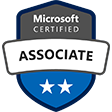Course Overview:
This hands-on, lab-driven course directs managers, project managers, and team leaders through the real-world process of using SharePoint to propel projects. Improve efficiency and boost the likelihood of success as you learn to build a customized Project Management Information System (PMIS), develop SharePoint project sites, build document libraries and management protocols. You will integrate Microsoft Office software, build SharePoint Workflows, archive completed projects, and much more during SharePoint project management training. Add these critical SharePoint tools to your project management expertise and experience the drastic difference that comes with truly effective project management.
Attendees to TN-323: SharePoint 2010/2013 for Project Management will receive TechNow approved course materials and expert instruction.
Date/Locations:
No Events
Duration: 3 days
Course Objectives:
- SharePoint as a Project Management Information System (PMIS)
- Creating a PMIS
- Enabling Team Collaboration with SharePoint
- Tracking Projects with SharePoint
- Working with Business Intelligence
- Establishing Processes and Standards with SharePoint
- Managing Meeting with Meeting Workspaces
- Working with Microsoft Access
- Creating a PMO View
- Concluding a Project
Prerequisites:
- PM-223: Introduction to Project Management or equivalent knowledge
- Six months experience with SharePoint as an end-user
- Six months experience with SharePoint as an administrator
Comments
Latest comments from students
User: joseibarra
Instructor comments: Very patient, communicated expertly. Made the class easy to understand and how it applies in the real world.
Facilities comments: Excellent.
